Individual Posture Patterns: The Silent Guide to Your Life's Journey
- Updated - May 8, 2024
In a diverse world, everyone moves and behaves uniquely. Beyond the distinctiveness of fingerprints or the sound of laughter, our posture—how we stand, sit, and walk—tells its own story. These individual posture patterns are more than just physical stances; they reflect our past, our present mindset indicators and predictors of future well-being. Yet, they often go unnoticed in our bustling lives. Recognizing and embracing these subtle cues, we can better understand our life’s journey and our posture’s profound role.
The Science Of Posture: Understanding the Basics
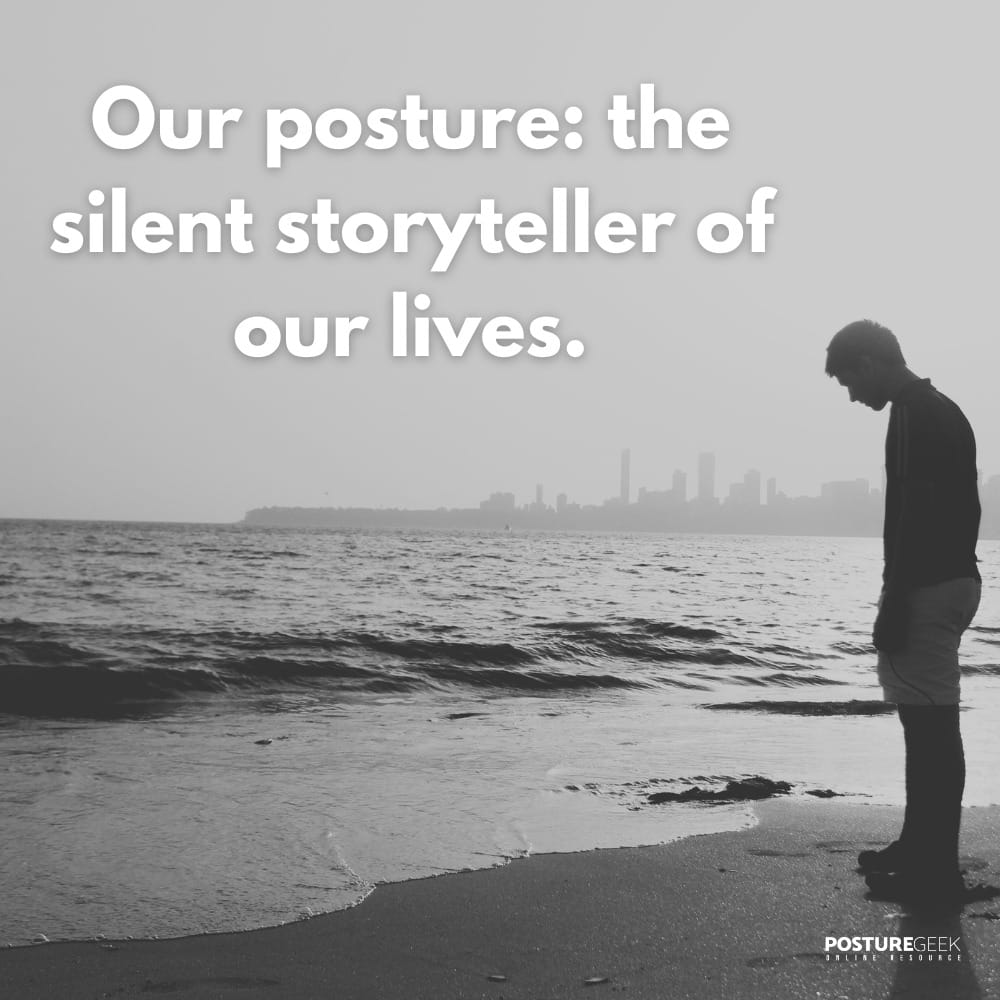
What is Posture?
- Definition and Importance: Posture is how we position our bodies in space, whether standing, sitting, or lying down. It’s about more than just “standing up straight”; it involves alignment, balance, and the intricate interplay of muscles and bones.
The Role of Biomechanics:
- Understanding Movement: Biomechanics is the science that studies the movement of living bodies, including how muscles, bones, tendons, and ligaments work together.
- Why Good Posture Matters: Good posture ensures a balanced distribution of force across various body structures, minimizing stress on any one area.
The Lifelong Impact of Gravity:
- From Toddlers to Adults: From our first steps, we learn to resist gravity, which shapes our posture over time. Our bodies adapt to the demands we place on them, influenced by our activities and environment.
Benefits of Good Posture Awareness
- Physical Health: Prevents muscle fatigue, conserves energy, and ensures efficient muscle use.
- Prevention of Strain and Overuse: Maintains alignment, reducing the risk of muscle strain, overuse disorders, and pain.
- Enhanced Respiratory and Circulatory Functions: Supports better breathing and promotes efficient blood circulation.
- Confidence and Appearance: An upright posture enhances both self-esteem and physical appearance.
Factors Influencing Our Posture
- Daily Activities: Sports, work, and habits like bag carrying can impact our posture.
- Health and Fitness: Muscle strength, flexibility, and core stability significantly affect postural alignment.
- Genetic Factors: Traits like height and body type, influenced by genetics, play a role in our natural postural tendencies.
- Impact of Injuries: Accidents or injuries can lead to changes in posture due to pain or compensatory behaviors.
Our posture is dynamic and continually influenced by a variety of factors. It is not just about aesthetics; maintaining good posture is crucial for optimal health and well-being.
Discover a practitioner near you.
Looking for a practitioner near you? Our extensive network of qualified professionals is here to help you.
Identifying Unique Patterns
Humans, by nature, are diverse and varied, and this is evident not just in our thoughts and actions but also in the way our bodies move and rest. Our postures and movements, influenced by various internal and external factors, are as unique as our fingerprints. Let’s delve deeper into these distinct patterns:
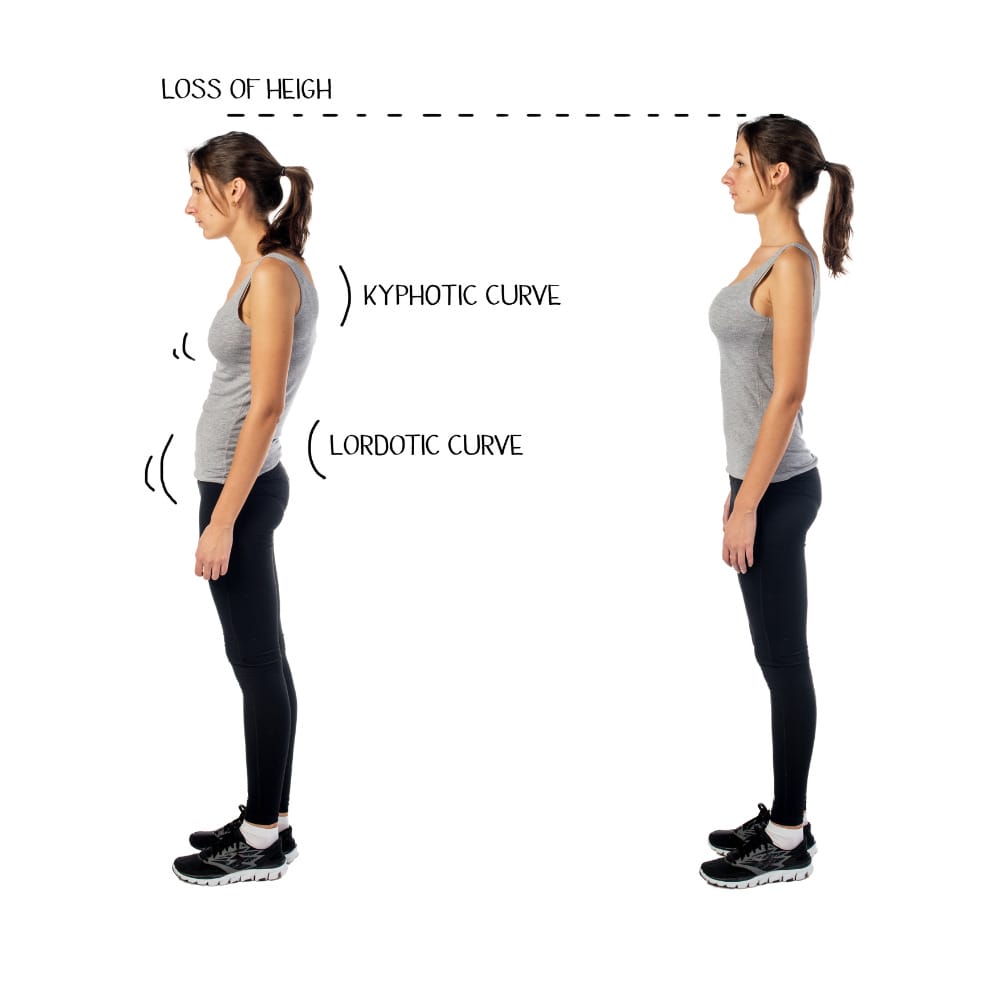
Standing
Standing might seem like a simple, passive action, but it’s a canvas of individual nuances when observed closely. Here’s a more in-depth look:
- Weight Distribution: Some people lean more on one foot, unconsciously shifting their body weight to one side. This can be influenced by habitual behavior or sometimes due to a past injury.
- Head Position: A slightly tilted or forward-leaning head can indicate prolonged screen time or even a person’s contemplative nature. Conversely, an upright head might show attentiveness or alertness.
- Shoulder Alignment: The positioning of shoulders can hint at one’s occupation or daily activities. For instance, those who spend hours at a desk might have forward-rolled shoulders. On the other hand, athletes or those involved in certain physical labors might exhibit broader and more backward-aligned shoulders.
Sitting
Sitting, a posture most modern humans adopt for hours every day, is filled with personal intricacies:
- Spinal Curve: While some might have a pronounced curve in their lower back (lumbar lordosis) due to a more anterior pelvic tilt, others might have a flatter lumbar curve. This can be influenced by muscle strengths and weaknesses or even by the type of seating you may be accustomed to.
- Hip Positioning: The angle at which the hips are positioned can determine a lot. Some might sit with their hips rolled backward, leading to a slumped posture, while others, especially those mindful of their posture, might keep their hips neutrally aligned.
- Foot Placement: Some prefer to keep their feet flat on the ground, ensuring maximum support, while others might cross their legs or tuck them underneath, a pattern often linked to comfort or sometimes cultural habits.
Walking
The act of walking, a rhythmic coordination of muscles and bones, is an orchestra of individual differences:
- Stride: While some have long, purposeful strides indicative of a hurried nature or tall stature, others take shorter, more measured steps, reflecting a more laid-back or cautious demeanor.
- Arm Movement: The swing of the arms can vary from being minimal to pronounced. Those with a more athletic build or training might exhibit a coordinated arm swing, aiding in propulsion.
- Pace and Rhythm: Some people naturally walk faster, their steps echoing their urgency or high energy levels. In contrast, a leisurely pace might hint at a more relaxed personality or someone soaking in their surroundings.s
These subtle standing, sitting, and walking cues are not random patterns. They are interwoven tales of our lifestyles, experiences, habits, and personalities. Observing and understanding them can provide profound insights into our lives and those around us.
Our Posture and Movement: As Unique as Fingerprints
Every individual’s fingerprint serves as a unique identifier, an unparalleled mark of identity. The intricacies of the ridges, the loops, and the whirls, no two fingerprints are ever the same. This level of uniqueness is not limited to just our fingertips. If we step back and observe, our posture and movement patterns mirror this distinctiveness.
Imagine gathering footprints from a beach or impressions from people’s walks in soft soil. As with fingerprints, you’d find no two impressions identical. Everyone has a different gait, a unique rhythm, and distinct pressure points.
Similarly, our posture – the way we naturally hold ourselves while standing, sitting, or even lying down – is our body’s ‘fingerprint‘. These postural ‘ prints ‘ reveal much about us, influenced by genetics, experiences, and personal habits. They tell tales of our ancestral lineage, the sports we played as children, the injuries we might have encountered, and even the emotional experiences that have left an impression on our psyche.
Furthermore, just as fingerprints have functional roles in terms of security and identity, our posture and movement patterns have practical implications in our lives. They dictate how we physically navigate the world, influence our health, and even play a role in how others perceive us.
Embracing the idea that our posture is as unique as our fingerprints empowers us with a sense of identity. It fosters an appreciation for the beauty of human diversity and provides insights into our history and experiences.
So the next time you look at your fingerprints or observe your reflection, remember that every stance, every step, every tilt of your head is an echo of your unique journey, as individual as the swirls on your fingertips.
The Underlying Reasons for Our Unique Postural Patterns

Our posture is more than just how we position our bodies; it’s a tapestry woven with threads of genetics, experiences, habits, culture, and environment. Each person’s posture tells a tale, and understanding the reasons behind these distinctions can offer a profound insight into their lives. Let’s delve deeper into these contributing factors:
Genetics
Our DNA is the blueprint of our physicality. It defines the color of our eyes, the shape of our nose, and even some aspects of our posture.
- Bone Structure: Our genetic code determines the structure and shape of our bones. This means some people naturally have a wider pelvis or a more pronounced spinal curve, which affects their standing and sitting posture.
- Muscle Composition: Genetics also plays a role in determining muscle length and strength, which in turn can influence the way someone moves or holds themselves.
- Height and Build: A person’s height and overall build, which are genetically determined to a significant extent, play a role in how they carry their weight and, subsequently, their posture.
Experiences and Habits
Our daily routines and past experiences shape our posture subtly yet persistently.
- Activities and Hobbies: Someone engrossed in playing the violin might develop a certain way of holding their shoulders and neck, unlike a martial artist with a posture trained for agility and defense.
- Occupational Influences: A desk worker might develop a forward head posture due to prolonged screen time, while a construction worker might have a broader stance from lifting heavy materials.
- Daily Habits: Habits like how we sleep, carry our bags, or even our shoe preferences (like high heels vs. flat shoes) can lead to postural adaptations over time.
Cultural and Environmental Factors
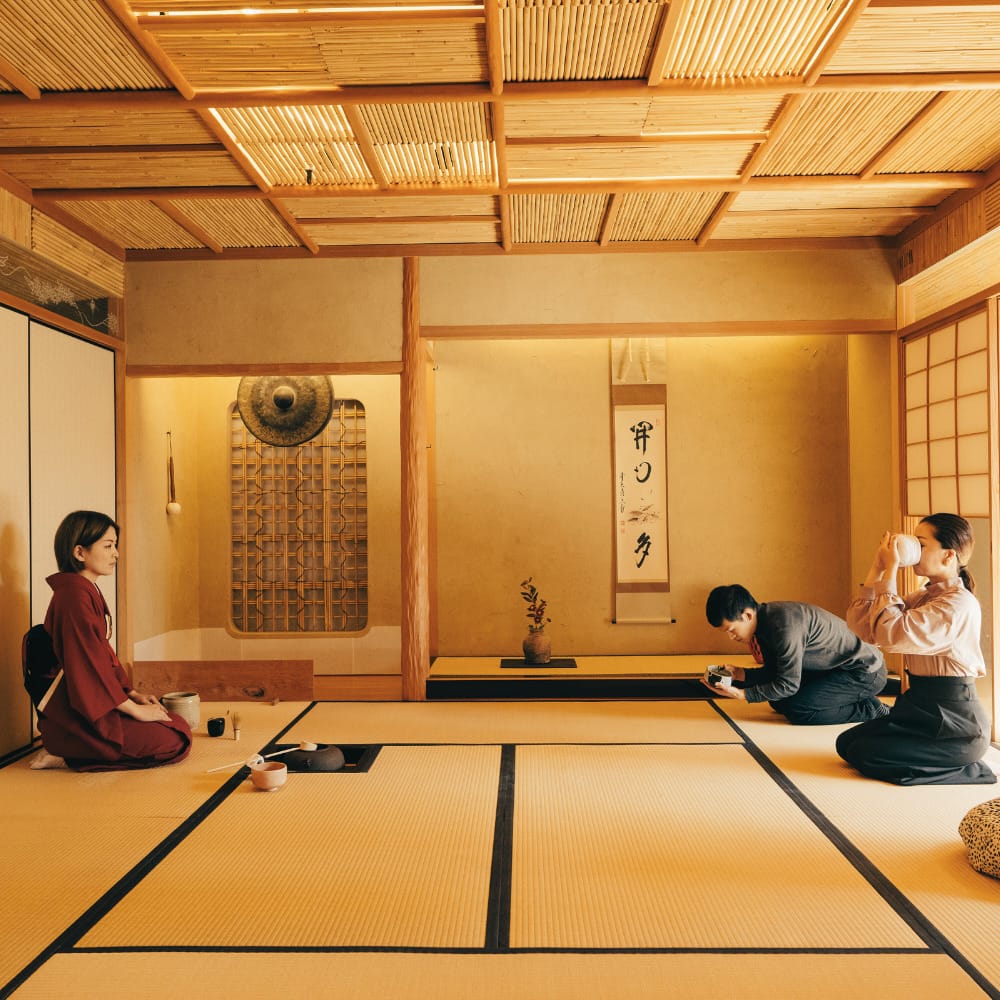
Our cultural upbringing and our environment leave an indelible mark on our posture.
- Cultural Norms: In some Eastern cultures, sitting on the floor cross-legged is common, which can lead to increased hip flexibility. Conversely, Western cultures, with a prevalence of chair use, might exhibit different patterns of lumbar support and leg positioning.
- Environmental Adaptations: People from mountainous regions might develop a more robust lower body posture, aiding in climbing steep terrains, while those from plains might exhibit a different stride in walking.
- Clothing and Footwear: Traditional attire, like the Japanese kimono or the Indian saree, can influence how one walks or stands. Similarly, footwear, from the cushioned sandals of the Masai tribe to the high-heeled boots of urban cities, can affect gait and posture.
Our posture is a living diary, chronicling our genetic heritage, the life we’ve lived, the experiences we’ve embraced, and the cultural tapestries we’re woven into. Recognizing these underlying reasons fosters a deeper understanding of ourselves and nurtures an appreciation for the diversity around us.
Discover a practitioner near you.
Looking for a practitioner near you? Our extensive network of qualified professionals is here to help you.
How Posture Informs the Way We Live in Our Body
The way we carry ourselves, the curves of our spine, the tilt of our head, and the alignment of our hips are all part of our posture’s complex structure. However, posture isn’t just about physical alignment; it’s intricately tied to our holistic well-being, affecting our physical, mental, and spiritual dimensions. Let’s explore these interconnections in depth:
Physical Health
Our body is a marvel of biomechanics. The way it’s positioned can have a domino effect on various systems:
- Musculoskeletal Health: Proper posture ensures optimal alignment of bones, reducing undue strain on muscles, tendons, and ligaments. This alignment minimizes wear and tear and prevents overuse injuries.
- Digestive System: Surprisingly, posture plays a role in our digestion. Slouching or poor posture can compress internal organs, leading to issues like acid reflux or slowed digestion. An upright posture, on the other hand, provides ample space for organs to function optimally.
- Respiratory Efficiency: An erect posture opens the chest cavity, allowing for better lung expansion and efficient oxygen exchange, essential for overall bodily functions.
Mental and Emotional Health
The relationship between our posture and mental state is bidirectional, each influencing the other in myriad ways:
- Mood and Confidence: Standing tall with shoulders back isn’t just about looking confident; it boosts our self-esteem. Research has shown that maintaining an upright posture can lead to increased feelings of positivity and reduced stress.
- Reflection of Mental State: Just as our mood can influence our posture, how we hold ourselves can hint at our emotional state. Slouching might indicate fatigue or low spirits, while an upright posture can suggest alertness or enthusiasm.
- Brain Function: Improved posture can enhance blood flow and oxygen to the brain, potentially boosting cognitive functions and concentration.
Energy and Vitality
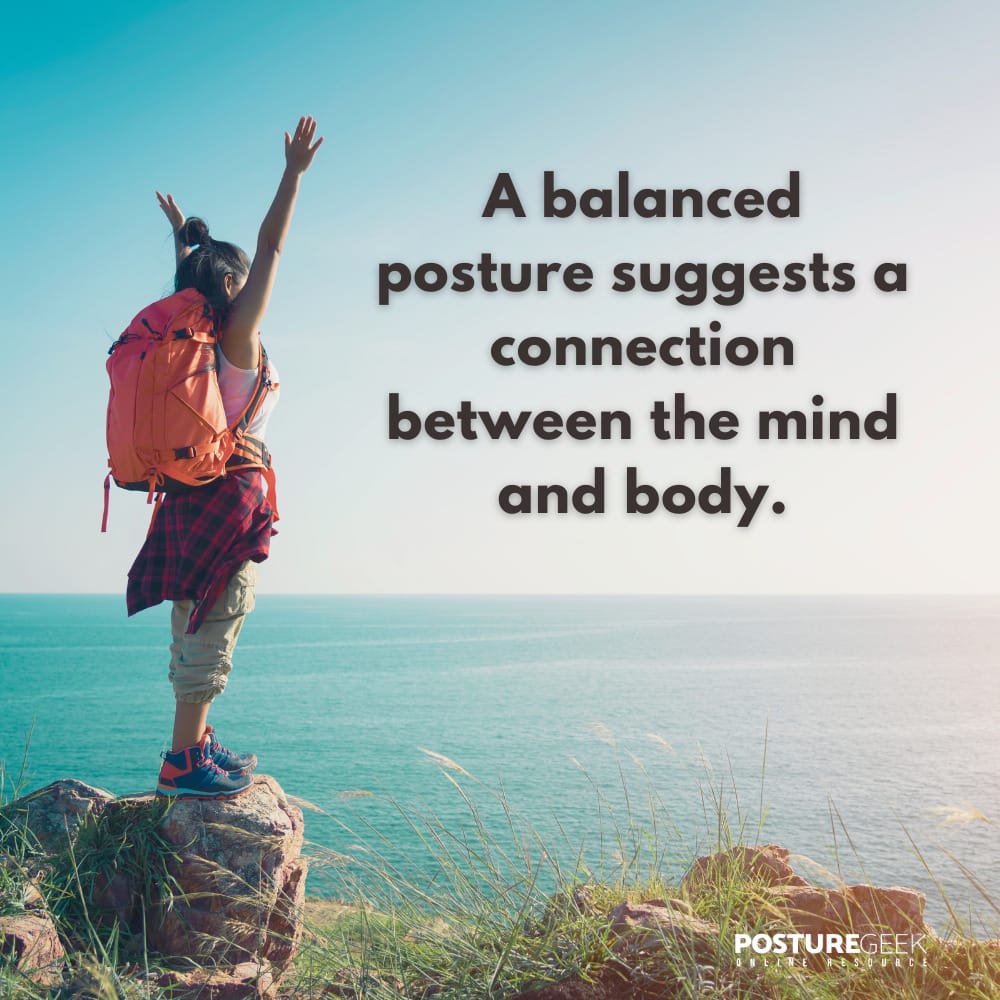
The concept of energy flow within the body has been a cornerstone of Eastern philosophies and medical traditions:
- Flow of ‘Chi’ or ‘Qi’: Ancient Chinese philosophy speaks of ‘chi’ or ‘qi’ – the life force or energy flow. Maintaining an open and balanced posture is believed to aid in the smooth flow of this energy, harmonizing bodily functions and promoting vitality.
- Chakras and Alignment: In Indian yogic traditions, the spine’s alignment is crucial for the opening and balancing chakras or energy centers. Proper posture can aid in this alignment, facilitating spiritual awakening and growth.
Our posture can be a barometer of our holistic well-being. It’s not just about standing straight; it’s about living a balanced, harmonious, and healthy life. Respecting and nurturing our posture is, in essence, respecting and nurturing ourselves.
Understanding Standing Posture and Its Complications
When we talk about standing posture, we refer to the alignment and positioning of the body when a person is upright and stationary – static posture. A correct standing posture involves appropriately aligning the body’s segments to minimize stress and strain on the body.
However, not everyone can achieve this notion of an ‘ideal’ posture. Postural deviations are variations from the normal alignment, and they can arise from a myriad of factors, including genetics, habits, or specific events in a person’s life. These variations can lead to one segment of the body—like the pelvis or spine—being out of line with another. For example, a forward tilt of the pelvis or a rounded upper back are common postural deviations.
Often, these changes are linked to muscle imbalances. This can mean that specific muscles are either too tight, pulling a body segment out of its ideal position, or too weak, failing to provide the necessary support to maintain proper alignment. Over time, these imbalances can become more pronounced, leading to discomfort, pain, or even reduced mobility.
To truly understand and address postural deviations, it’s essential to identify and rectify underlying muscle imbalances. By doing so, you can work towards achieving a healthier, more balanced standing posture, improving physical well-being and enhancing overall quality of life.
The Relationship Between How We Stand and How We Feel About Life
Often perceived as a mere physical aspect, posture is deeply intertwined with our emotional, social, and psychological dimensions. Beyond the curvature of the spine or the alignment of the hips, it narrates a story about our relationship with ourselves and the world around us. Let’s explore the profound connection between posture and our overall life experience:
Perception and Interactions
Our posture is like a silent communicator, speaking volumes even before we utter a word:
- First Impressions: As social creatures, we are hardwired to read non-verbal cues. An upright, open posture is often perceived as a sign of confidence, positivity, and openness, making interactions smoother and more productive.
- Approachability: A person with relaxed shoulders and an open chest appears more approachable and trustworthy. This posture invites interaction and fosters connections, both personally and professionally.
- Social Dynamics: Studies have shown that individuals with good posture are often perceived as leaders or authority figures. Their posture exudes an aura of assurance and reliability, often leading to increased group respect and influence.
Reflection of Internal State
Our external posture often mirrors our internal emotional landscape:
- Emotional Resonance: Just as a drooping plant might indicate a lack of water or sunlight, a slouched posture can indicate emotional distress, low self-esteem, or internal struggles. Conversely, when we’re pleased or proud, our posture naturally elevates, echoing our inner joy.
- Self-Awareness and Acceptance: Embracing our unique postural patterns is akin to accepting our idiosyncrasies. Understanding and loving our posture becomes a symbol of self-awareness and self-acceptance, two cornerstones of a fulfilling life.
- Mind-Body Harmony: An aligned and balanced posture hints at a harmonious connection between the mind and body. It suggests a state of equilibrium where you are in tune with your emotions, thoughts, and physicality.
Enhancing Life Quality
The relationship between posture and life quality is reciprocal:
- Boosting Mental Well-being: Actively improving our posture can have a cascading effect on our mental well-being. As our posture betters, we often feel more energetic, confident, and positive, leading to an enriched quality of life.
- Reinforcing Positive Feedback Loop: Feeling good about our posture reinforces positive self-image and self-love. This positive perception, in turn, motivates us to maintain good posture, creating a virtuous cycle.
In essence, posture isn’t just about bones and muscles; it reflects our life journey. Embracing and nurturing our unique postural patterns is synonymous with loving our life with all its twists and turns. In the dance of life, our posture is both the rhythm and the movement, shaping and being shaped by our experiences.
Ways to Enhance Our Postural Patterns
Our postural patterns, formed over a lifetime, are integral to our overall well-being. The good news is that even entrenched postural habits can be improved with conscious effort. Let’s delve deeper into strategies and measures to refine and optimize our postural patterns:

1. Cultivate Awareness
Every significant change begins with awareness:
- Mindful Observation: Regularly check in with your body throughout the day. This could be when you’re standing in a queue, working at your desk, or relaxing on the couch. Recognize and rectify any deviations or strains.
- Posture Alerts: Use technology to your advantage. Set hourly reminders on your devices to reassess and realign your posture, especially if you have a sedentary job.
- Mirror Feedback: Occasionally, stand in front of a full-length mirror and assess your posture. This visual feedback (posture assessment) can be an excellent tool to pinpoint imbalances.
2. Embrace Physical Activity
Movement is a panacea for numerous ailments, including postural imbalances:
- Strength Training: Building core (abdominal muscles) strength, especially muscles around the abdomen, back, and pelvis, can provide better support for the spine. This not only improves posture but also reduces the risk of injuries.
- Flexibility and Stretching: Engage in activities like yoga or pilates. These disciplines focus on flexibility (easing tight muscles) and balance, helping elongate muscles (joint mobility), improving alignment, and promoting better posture.
- Aerobic Exercises: Activities like walking, swimming, or cycling can boost overall fitness and stamina, which in turn supports a more erect and healthy posture.
3. Seek Expert Guidance
Improving your posture often benefits from professional insights:
- Health Professionals: Whether it’s physiotherapy, physical therapy, massage, chiropractor, or other specialists, they bring expertise in understanding musculoskeletal balance and can suggest exercises or techniques tailored to individual postural needs.
- Therapeutic Adjustments: Professionals specializing in the musculoskeletal system can offer adjustments to realign the body and promote better posture.
- Posture Analysis: Many wellness institutions provide comprehensive postural assessment using state-of-the-art tools and methodologies. Such posture assessments can shed light on imbalances and recommend corrective measures.
4. Integrate Ergonomic Tools
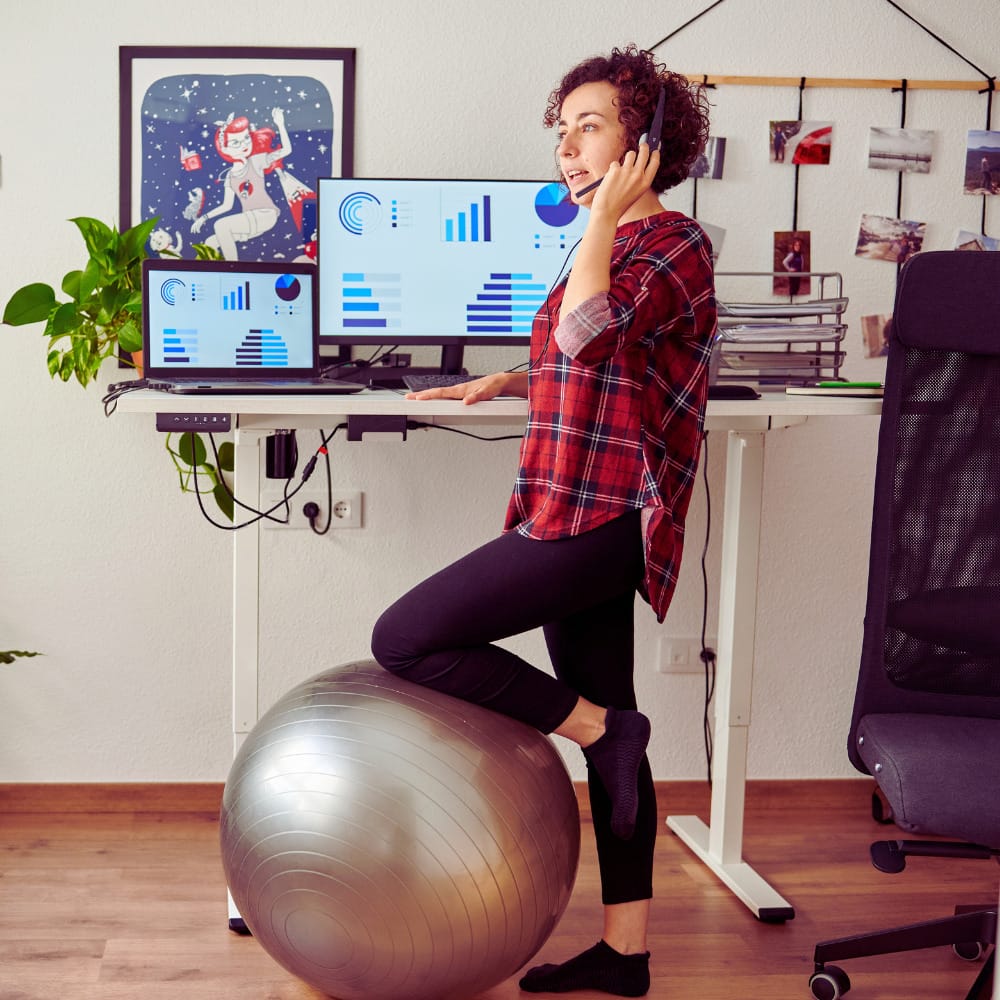
Our environment plays a crucial role in shaping our postural habits:
- Ergonomic Chairs: Invest in chairs that offer lumbar support (lumbar spine) and promote a neutral spine. Adjust the height so your feet are flat on the ground and your knees are at a 90-degree angle.
- Stand-up Desks: Alternating between sitting and standing can alleviate prolonged strain on the back. Adjustable desks that cater to both positions can be beneficial.
- Footwear: Use shoes that support the arch and cushion the heel, especially if you spend long hours on your feet. Avoid prolonged use of high heels, which can tilt the pelvis and strain the back.
- Keyboard and Mouse Placement: Ensure that your keyboard and mouse are at a height where your wrists remain neutral, and you don’t have to reach or slouch.
So, while our postural patterns are an accumulation of years of habits and experiences, they are not set in stone. With dedication, awareness, and the right strategies, we can positively influence and enhance how we carry ourselves. This journey towards improved posture benefits our physical health and reverberates through every facet of our lives, elevating our overall quality of life.
Final Thoughts
How we stand, sit, and walk is more than just a physical manifestation; it reflects our inner selves and our journey through life. Embracing our individual postural patterns goes beyond the physical realm—it touches upon self-awareness, acceptance, and love.
Just as the subtle nuances of our posture can narrate stories of our past and hint at our current state, they can also guide us toward a brighter, healthier future. By paying attention to these cues, we can boost our physical well-being and enrich our life experiences, cherishing each moment with a heightened sense of self-awareness.
Call to Action
Each of us carries a unique story in how we move and present ourselves. Maybe you’ve noticed a transformation after making conscious posture changes, or perhaps you’ve experienced a poignant moment that reshaped your stance. We’d love to hear your tales.
Please share your personal posture story and join us in a collective journey of self-discovery through our postural patterns. And for those curious to learn more, we’ve curated a list of insightful readings and resources to help you navigate this fascinating realm. Dive in and embrace the wonders of your unique posture story!
PLEASE NOTE
PostureGeek.com does not provide medical advice. This information is for educational purposes only and is not intended to be a substitute for professional medical attention. The information provided should not replace the advice and expertise of an accredited health care provider. Any inquiry into your care and any potential impact on your health and wellbeing should be directed to your health care provider. All information is for educational purposes only and is not intended to be a substitute for professional medical care or treatment.
About the author
Find Expert Posture Practitioner Near You
Discover our Posture Focused Practitioner Directory, tailored to connect you with local experts committed to Improving Balance, Reducing Pain, and Enhancing Mobility.
